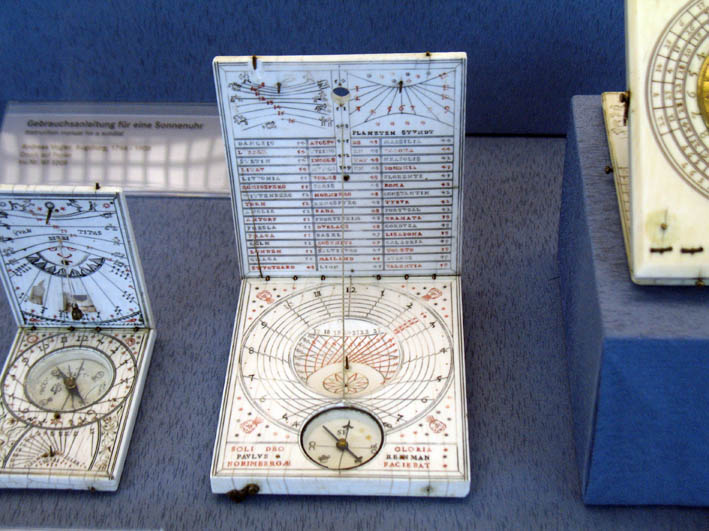4. August 2011
It is white, slim, featuristic and connects its user to the rhythm of metropolises anywhere.
It is the pride of craftmanship and technology and lends its possessor the aura of hipness.
We are not talking about the iPhone or anything contemporary. We are talking about the must-have of 1450, a similarily “killing app”: the medieval sundial made from ivory and crafted by proud (and somewhat fenced-in) technologist-artisans in the city of Nuremberg.

The twenty-some Patrizier-families ruling Nuremberg by then carefully watched over the city’s potential to gain wealth by innovatiing and by marketing sought-after goods of luxury.
An incredible industrial power emerged from this exercise: Around 1500 a.c., the craftsmen of Nuremberg were able to deliver 25.000 harnishes within 6 months after the order was placed. This is what Roland Schewe, responsible for restauration of weapons and scientific instruments in the GNM (Germanisches Nationalmuseum Nürnberg), told us today.
And as you may bet: There’s an end to every success-story. In Nuremberg, says Mr Schewe, the classification of sundial-making as hidden art prohibited the free flow of information, and any type of professional exchange. Even flawed models of inscriptions on sundials were copied over at least two generations and went out without anybody noticing, it appears.
Desired objects as status symbols?
Dumb users?
Copy & paste as source of decline?
The success of Nuremberg-made sundials didn’t last forever, they were replaced by other items to measure time and prove taste.
And although history doesn’t repeat itself (at least that’s what they say), there’s lots of things to observe in the field of early high-tech, it seems. Thanks to Dr. Thomas Eser, Roland Schewe and Alexander Thekale we (Sergey Stafeev, Klaus zur Lage and myself) had an magnificent insight into the mechanics of sunlight, science and success.